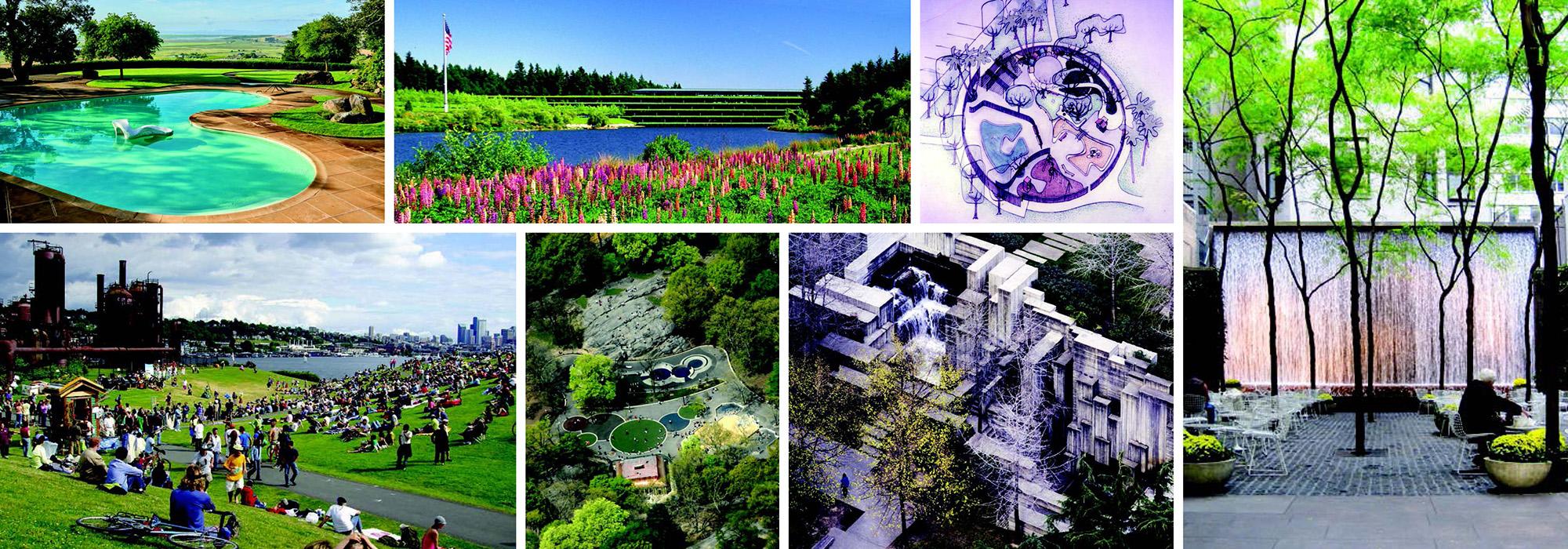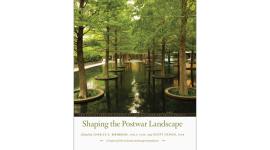For Your 2019 Reading List: Shaping the Postwar Landscape
Recently published by the University of Virginia Press, Shaping the Postwar Landscape is the latest hardbound volume in The Cultural Landscape Foundation’s well-known Pioneers of American Landscape Design reference project. Unlike the previous volumes, this one is thematic, chronicling the lives and careers of more than 70 landscape architects and allied professionals—architects, planners, educators, artists, and others—who were active in their careers after World War II and roughly up to the Bicentennial, a period that witnessed the full flowering of the Modernist style in American landscape architecture. This richly illustrated follow-up to Shaping the American Landscape (published by the University of Virginia Press in 2009) comes at a time when interest in midcentury architecture is flourishing, and its thematic approach offers a substantial parallel contribution to the field of landscape studies.
[Read a recent review for Docomomo by Meredith Arms Bzdak, Ph.D.]
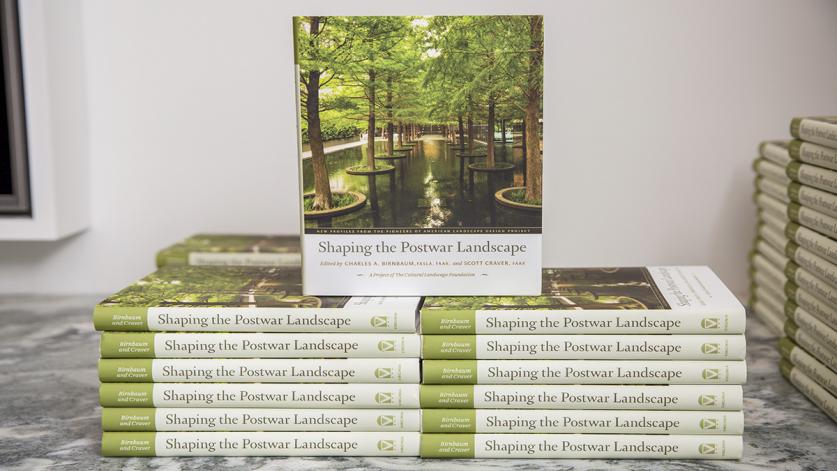
The volume sheds new light on a time when landscape architects played an increasingly important role in the revitalization of American cities. By the 1960s they had begun to introduce new typologies for public spaces in the civic realm, including parks that capped freeways, plazas and gardens atop buildings, promenades along abandoned waterfronts, “vest pocket” parks on tiny urban plots and former derelict sites, and new pedestrian-friendly downtown malls that had once been the exclusive province of the automobile.
And while the beginnings of the Modernist style in American landscape architecture are often traced to the influential trio of Harvard classmates Garrett Eckbo, Dan Kiley, and James Rose, the story of the period as told here encompasses more than the history and lineage of a style: It includes practitioners who reimagined how we play and where we work, as well as those who developed new approaches to regional and campus planning, complex environmental studies, and new types of collaborative, multidisciplinary firms equipped to operate at an unprecedented scale. These pioneering practitioners were not just influential in urban environments. They also applied their skills to the mass production of suburbia and even to mobile-home communities. They responded to the new possibilities afforded by outdoor living in the California climate, and their work shaped landscapes in the American South, East, West, and Heartland.
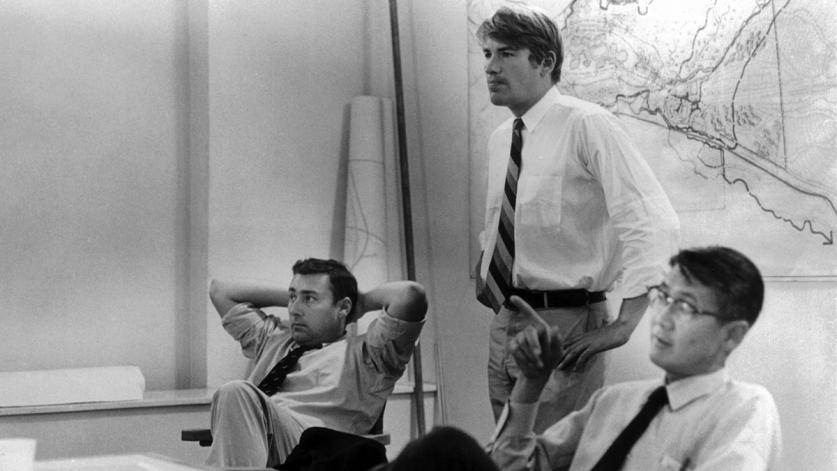
As this new volume reveals, many of the individuals profiled here gained success after overcoming significant social barriers. A remarkable number experienced the Japanese internment camps firsthand, and many were women practitioners ahead of their time, some largely overshadowed and some who gained the timely recognition of their peers. Several pioneers were lead designers and key contributors in firms best known for their eponymous founders (such as the Office of Dan Kiley, Lawrence Halprin & Associates, and Sasaki, Walker and Associates); and not all of them made their mark as landscape architects—some were artists, architects, or educators whose work intermingled with and expanded the boundaries of landscape architecture.
By bringing pioneering individuals of the Modernist period together in a single volume, the book aims to make the scope and import of their contributions all the more visible and understood. Thus while the majority of the essays represent the first comprehensive documentation of a person’s life and career, the book also includes several pioneers who have been the subject of other books and articles or were featured in earlier volumes; those entries have been updated with new information when appropriate. And as with previous volumes, a list of extant publicly accessible landscapes, organized by pioneer, is appended at the end of the book, and bibliographic sources are provided for additional reading. Also as before, the essays contain visual cues that help the reader explore the myriad connections among the pioneers.
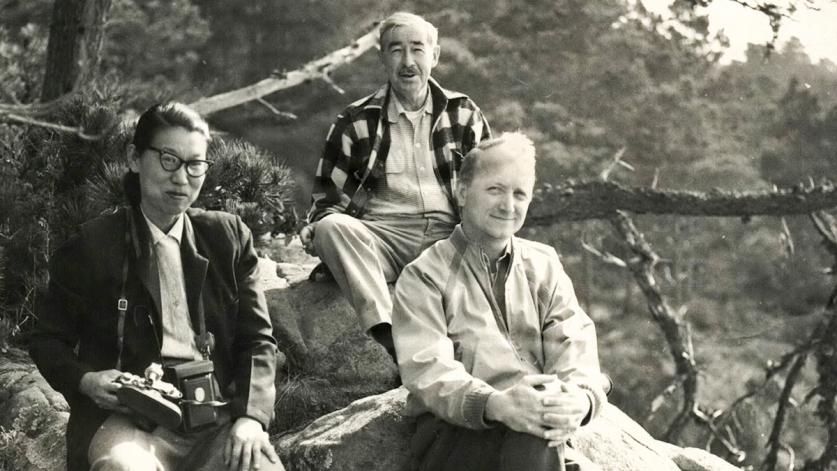
The Featured Pioneers
Dean Abbott / David E. Arbegast / Mai Arbegast / Fred W. Barlow Jr. / Herbert Bayer / Richard C. Bell / Arthur S. Berger and Marie H. Berger / Alfred Caldwell / Donald R. Carter / Robert H. Carter / Marjorie Sewell Cautley / Walter L. Chambers / Thomas Dolliver Church / John F. Collins / Lester Albertson Collins / Angela Danadjieva / Richard Dattner / Edward L. Daugherty / Stuart O. Dawson / Robert Deering / Garrett Eckbo / Lawrence A. Enersen / M. Paul Friedberg / Bradford M. Greene / Richard Haag / Lawrence Halprin / Conrad Hamerman / Asa Hanamoto / Carl D. Johnson / Carol R. Johnson / Philip Johnson / William J. Johnson / Johnson, Johnson, and Roy / Joseph P. Karr / Koichi Kawana / Daniel Urban Kiley / Masao Kinoshita / Abraham Levitt / Eugene R. Martini / Robert E. Marvin / Ian L. McHarg / Charles W. Moore / Richard B. Myrick / Shinji Nakagawa / Kenichi Nakano / Satoru Nishita / Isamu Noguchi / Cornelia Hahn Oberlander / Theodore Osmundson / Harriet Pattison / George E. Patton / Peter G. Rolland / James C. Rose / Clarence L. Roy / Robert N. Royston / Hideo Sasaki / Geraldine Knight Scott / Sidney N. Shurcliff / John Ormsbee Simonds / Robert Smithson / André (Andrew) Steiner / Edward Durell Stone, Jr. / Frederic B. Stresau / Tommy Tomson / Christopher Tunnard / Takeo Uesugi / Richard A. Vignolo / Peter E. Walker / Peter Ker Walker / Jean E. Walton / Richard K. Webel / Robert Lewis Zion
About the Editors
Charles A. Birnbaum, founder, president, and CEO of The Cultural Landscape Foundation, is the editor of Shaping the American Landscape (Virginia), among many other volumes. He is a Fellow of the American Academy in Rome and of the American Society of Landscape Architects, which in 2017 awarded him the ASLA Medal, its highest honor.
Scott Craver, Ph.D., is the editorial director of The Cultural Landscape Foundation and a Fellow of the American Academy in Rome.
Published by the University of Virginia Press, 2018



